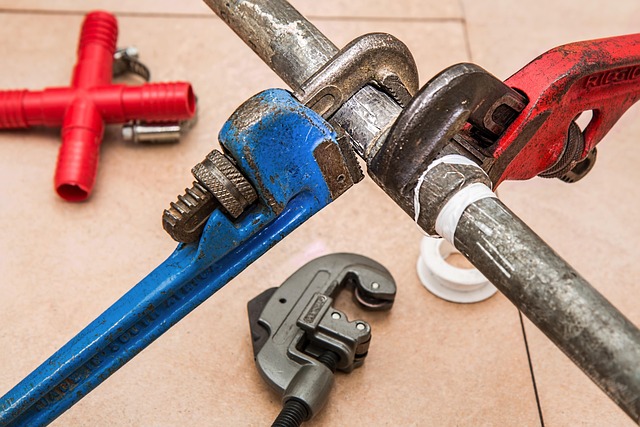Attic mold poses significant health risks and damages air quality, stemming from leaks or poor ventilation. Regular inspections, prompt repairs, and proper ventilation prevent and address mold growth. Initial steps in attic mold removal involve containment, material removal, and anti-mold treatments. Ongoing maintenance, including leak repairs and humidity control, is crucial to avoiding future issues and improving overall home air quality. Implementing key strategies like adequate ventilation, addressing roof leaks, and maintaining low indoor humidity effectively prevents and fixes attic mold.
Attic mold can be a silent invader, impacting your home’s air quality and health. Understanding its causes, from roof leaks and poor ventilation to high moisture levels, is key to prevention. This comprehensive guide delves into the health impacts of attic mold, offers signs to look for, shares effective removal strategies, and provides essential tips to prevent future issues. Discover how proper attic ventilation and prompt action can ensure a healthier home environment by tackling attic mold head-on.
- Understanding Attic Mold: Causes and Health Impact
- Signs of Attic Mold Infestation
- Effective Strategies for Attic Mold Removal
- Preventing Future Attic Mold Issues
Understanding Attic Mold: Causes and Health Impact

Attic mold can be a significant concern for homeowners, as it not only compromises the air quality within the home but also poses potential health risks. Understanding the causes and impact of attic mold is crucial in addressing this issue effectively. Attic mold typically arises from roof leaks or moisture buildup due to inadequate ventilation. When water seeps into the attic, it creates a fertile environment for mold growth, especially in areas with poor air circulation. Over time, this can lead to extensive damage not only to the structure of the attic but also to the overall health and well-being of residents.
The health impact associated with attic mold is diverse and can range from mild allergies to severe respiratory issues. Individuals exposed to moldy environments may experience symptoms such as sneezing, runny noses, itchy eyes, and respiratory difficulties. Those with compromised immune systems or existing respiratory conditions are particularly vulnerable. Preventing attic mold involves proactive measures like regular inspection for roof leaks, prompt repair, and ensuring proper ventilation in the attic space. Efficient attic ventilation aids in moisture removal, creating an unfavourable environment for mold to thrive.
Signs of Attic Mold Infestation

Attic mold can often go unnoticed, but it’s a serious problem that requires immediate attention as it poses significant risks to your health and home air quality. Signs of an attic mold infestation include musty odors, visible mold growth on insulation or drywall, and visible water stains or dripping from the roof. If you suspect any of these issues, it’s crucial to act fast. Delve into the problem thoroughly before it spreads further throughout your home.
Roof leaks and moisture issues are common causes of attic mold, so regular inspections for signs of damage are essential in preventing attic mold removal challenges later. Ensure proper ventilation in your attic space to mitigate moisture buildup, which is a prime condition for mold growth. If you’re dealing with an existing attic mold problem, addressing the root cause—whether that’s fixing roof leaks, improving airflow, or both—is key to solving it effectively and ensuring better home air quality moving forward.
Effective Strategies for Attic Mold Removal

Attic mold removal is a critical step in maintaining optimal home air quality. The first line of defense against attic mold is preventing it from forming in the first place. Regular inspections are key to identifying roof leaks and addressing them promptly, as these can be major contributors to attic moisture issues. Ensuring proper attic ventilation for mold control is also essential; adequate airflow helps regulate temperature and humidity levels, creating an environment that discourages mold growth.
To fix attic mold effectively, start by containing the affected area to prevent the spread of spores. This may involve sealing off the area or using physical barriers like plastic sheeting. Next, carefully remove any contaminated materials, such as insulation or ceiling tiles, ensuring proper disposal according to local regulations. After cleaning and drying the space, consider applying an anti-mold treatment to inhibit future growth. Regular maintenance, including addressing roof leaks and improving ventilation, will help keep attic moisture issues at bay and promote healthier home air quality.
Preventing Future Attic Mold Issues

Preventing Future Attic Mold Issues
One of the best ways to prevent future attic mold issues is through proper ventilation. Ensuring adequate air circulation in your attic helps regulate temperature and humidity, creating an environment that discourages mold growth. Consider installing vents or fans to facilitate airflow, especially if your attic is prone to heat buildup or moisture accumulation. Regularly inspect your roof for any leaks, as these can introduce excess moisture into the attic space, leading to potential mold problems. Promptly repairing or sealing these leaks can significantly reduce the risk of attic mold removal and related air quality concerns.
In addition to ventilation and leak repair, maintaining low indoor humidity levels is crucial in preventing attic moisture issues. Using dehumidifiers, especially in areas with high humidity, can help control moisture levels throughout your home, including the attic. Regularly cleaning and maintaining your HVAC system also plays a role; ensure air filters are clean and replace them as needed to prevent circulating mold spores. By implementing these strategies, homeowners can effectively address how to fix attic mold and maintain better overall home air quality.
